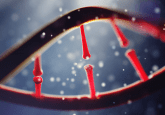Southeast Asia’s genetic history demystified

Ground-breaking DNA analysis has ended over 100 years of controversy over the history of humans in Southeast Asia.

The human population of Southeast Asia (SEA) exhibits a large amount of genetic diversity, and for over a century the population’s origins and the reason for its variation have been debated.
Two theories have been proposed. The first states that indigenous Hòabìnhian hunter-gatherers, who arrived in SEA from around 44,000 years ago, developed agricultural practices independently of their East Asia farmer neighbors. The second suggests rice farmers from China migrated to replace the Hòabìnhian hunter-gatherers.
A new international collaboration has suggested neither is completely right or wrong. In fact, the population is descended from at least four groups.
“Current evidence suggests that SEA was occupied by Hòabìnhian hunter-gatherers until ~4000 years ago, when farming economies developed and expanded, restricting foraging groups to remote habitats,” noted the study authors. What happened after this point has remained unclear.
The study saw ancient, human skeletal-derived DNA from Malaysia, Thailand, the Philippines, Vietnam, Indonesia, Laos and Japan extracted, along with DNA samples from Hòabìnhian hunter-gatherers and a Jomon from Japan. This marked the first time the latter two populations had been compared.
The DNA samples spanned the late Neolithic to the Iron Age, and dated back up to 8000 years – a first for the region, where previously only samples as old as 4000 years had been sequenced. This was a feat in itself – the climate of SEA makes DNA preservation, and thus its subsequent analysis, difficult.
A total of 26 ancient human genome sequences were obtained, which were then compared with DNA from the current population of SEA.
“We have shown that neither [previous] interpretation fits the complexity of Southeast Asian history,” explained Hugh McColl, a researcher at the University of Copenhagen (Denmark). “Both Hòabìnhian hunter-gatherers and East Asian farmers contributed to current Southeast Asian diversity, with further migrations affecting islands in South East Asia and Vietnam. Our results help resolve one of the long-standing controversies in Southeast Asian prehistory.”
Another study led by researchers at Harvard (MA, USA) has also used DNA analysis to show how multiple waves of migration have affected the genetic makeup of the SEA population over the past 50,000 years.





